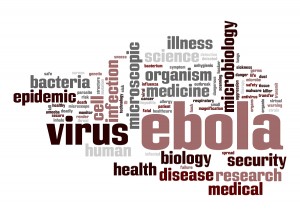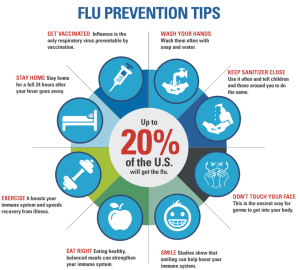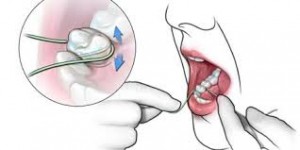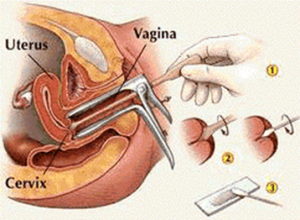Ebola virus has now infected about 2600 and killed more than 1400 people in its short history. That’s a mortality of about 54% overall.
Two Americans who had been treating patients with Ebola virus disease (formerly called Ebola hemorrhagic fever) in Liberia, West Africa had been treated back in the US at a hospital in Atlanta. They have just been released as cured. They have been treated with an experimental drug called ZMapp. This is a monoclonal antibody from mice against surface components of the Ebola virus.
At this point no safety studies on humans have been performed with ZMapp, but a recent ethics committee meeting of the WHO has determined that the emergency use of ZMapp would be ethically acceptable due to the high death rate of the disease otherwise without treatment.
Other scenarios of killer infections
Several decades back some of the diseases mentioned in this article were basically unknown to the general population, but in the meantime some new infectious diseases have received a lot of media attention.
You will remember that there was an outbreak of anthrax spores by inhalation in 2001 in the US. A recent New England Journal of Medicine report points out that prior to 2001 the death rate of patients who had inhaled anthrax spores was 80% to 90% even with the use of antibiotics. However due to earlier detection and diagnosis, and due to aggressive supportive measures this epidemic of anthrax by inhalation had a mortality of only 45% toward the end or that epidemic. Had there been a new substance used that was ineffective, but harmless otherwise the reduced death rate would have been attributed to the erroneous conclusion that this new drug was effective in reducing mortality rates. This article cautions that rigid safety and effectiveness studies have to be done on ZMapp to ensure that it is a safe and effective drug to treat Ebola virus and that the reduction in death rates is truly from the drug, not just from improved supportive measures.
Other newer infections have been Marburg hemorrhagic fever caused by the Marburg virus. This also belongs to the Filoviridae family of viruses to which Ebola virus belongs as well. Then there is the SARS virus, the cause of severe acute respiratory syndrome. Not too long ago the BSE prion, which is the virus causing bovine spongiform encephalopathy made history.
What do we know about the Ebola virus?
There are 5 strains of the Ebola virus, one of which (the Zaire strain) is responsible for the present outbreak of Ebola virus disease in Africa. Dr. Jon Lai who is associate professor of biochemistry at the Albert Einstein College of Medicine in New York City has developed antibodies in mice that will slow down and attack the aggressive Ebola virus when it enters the human body.
Ebola virus disease occurs in remote villages of the rainforest in Central and West Africa where fruit bats are the natural hosts of Ebola virus. It is transmitted from local fruit bats to animals (monkeys among others), to humans and can then be transmitted to other humans. The virus is not as easily transmitted as colds or the flu. For instance, the Ebola virus does not transmit through the air, food or water. But you can get Ebola virus through skin contact, fluid contact and through needles with blood from an infected person. Also, when surfaces are contaminated with infectious body fluids and you touch this contaminated surface with your skin, the virus will penetrate through the skin and get you infected.
There have been several outbreaks in Africa since 1976 as you can see from this WHO link.
This link also suggests that proper hygiene measure like cleaning of pig and monkey farms with sodium hypochlorite should be effective in inactivating the virus, which makes virus transmission to humans more difficult.
Symptoms of Ebola virus disease
Ebola virus disease has an incubation time of 8 to 10 days where the person may complain of some tiredness, but is not sick yet. This is the time when the Ebola virus multiplies. It paralyzes the immune system and distributes itself through the organ system.
After these initial days of incubation there is a sudden onset of a sore throat, high fever and headaches, lack of appetite, a stomachache and weakness.
Now the Ebola virus disease takes off and becomes life threatening as the major organs are infected with the virus, and as a result, vital organs shut down their functions. As the production of coagulation factors from the liver stops, there is major bleeding from body orifices (nose, ears, eyes, mouth, and bloody diarrhea). A skin rash develops all over the body from bleeding into the skin.
At this point the disease gets out of control as the blood circulation collapses and the affected person dies in shock. Otherwise, if fluid loss can be corrected in time with intravenous fluids, there is the danger to die from multi-organ failure. A few persons manage to survive, if the immune system produces enough antibodies in a timely manner to inactivate the Ebola virus.
Treatment options
At this time there is no effective treatment against the Ebola virus disease. As mentioned earlier, ZMapp is an experimental drug that may have some merit treating Ebola virus disease in the future, but at this point it is considered experimental as human safety studies and effectiveness studies of the drug have not been completed. Any experimental treatment with ZMapp will be part of these studies for the next few years, but production issues will have to be sorted out as well as presently there is not enough ZMapp around to treat all of the Ebola virus infected people in Africa.
This leaves us with the only preventative approach of interrupting the infectious pathway. We do know that there is a geographic zone in Africa where fruit bats, the natural hosts of Ebola virus live. It is in the same geographic zone that all of the known Ebola virus disease cases have originated from. It follows from this that it is safer for humans to live outside that zone. So do not plan sightseeing or other trips into those areas, if you value your life; I should qualify this by saying “until an effective treatment against the Ebola virus has been established”.
Those who bury dead ones who came down with this disease must wear safety suits, which look like space suits. As already indicated, surfaces need to be disinfected with sodium hypochlorite. All of these hygienic measures interrupt the Ebola virus transmission. Quarantine measures need to be strictly enforced for those who are suspected of harboring Ebola virus disease to prevent spreading this disease into the rest of society.
Conclusions
Although the medical puzzle of the Ebola virus disease has not yet been completely solved, there are encouraging facts that have been learnt. The Ebola virus has been around Africa since 1976 and several outbreaks have occurred on this continent since. But spread beyond these borders has been avoided due to strict isolation practices. Even within Africa the worst cases of Ebola outbreaks have occurred mostly in villages where hygienic measures are not adhered to as thoroughly when compared to larger African cities where isolation around Ebola virus disease patients is strictly enforced by the local authorities.
Hopefully with the emergence of an effective treatment this disease will get out of the lime light as did other killer diseases in the recent past.
More information on Ebola virus: http://nethealthbook.com/infectious-disease/infectious-disease-infections/ebola-virus/
Last edited Nov. 8, 2014















